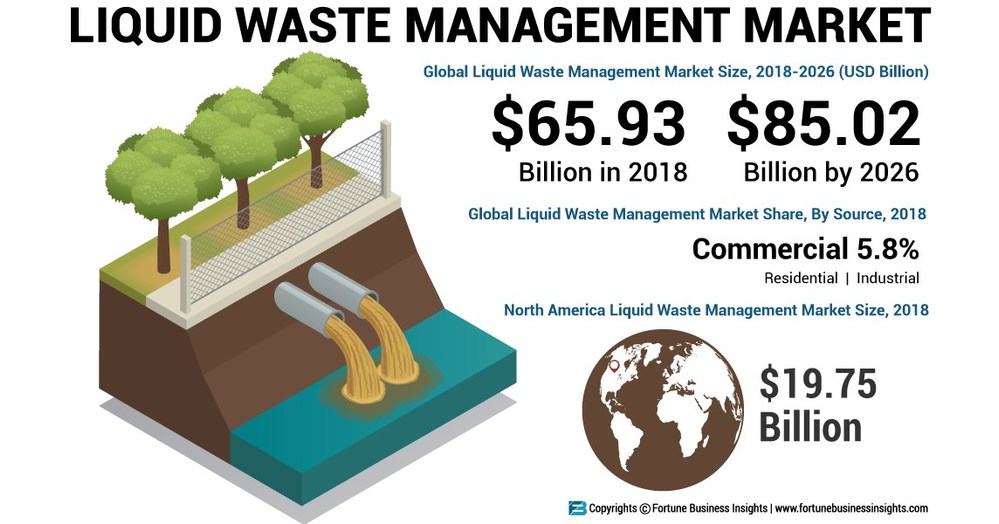The Best Guide To Reclaim Waste
The Best Guide To Reclaim Waste
Blog Article
Some Of Reclaim Waste
Table of ContentsNot known Details About Reclaim Waste Facts About Reclaim Waste RevealedThe Definitive Guide to Reclaim WasteReclaim Waste Fundamentals Explained8 Simple Techniques For Reclaim Waste
Residential sewage waste refers to the waste and items from a domestic septic storage tank. The appropriate management and disposal of domestic sewage waste need fluid waste to be moved to a sewer therapy plant where the appropriate techniques and equipment are used to detoxify and dispose of waste.
Business waste frequently consists of prospective dangers, such as flammable products or a combination of fluid and solid waste items, and requires an advanced and thorough disposal procedure. The disposal of commercial waste usually includes the filtration of waste before transportation to ensure risk-free and correct disposal. Hazardous waste is created from byproducts and overflow of industrial processes and manufacturing.
This kind of waste can not make use of the exact same sewer administration transportation or processes as septic or commercial fluids. The hazardous waste management process calls for the evaluation and screening of fluid waste prior to it undertakes the disposal process (liquid waste disposal). Runoff waste is the fluid waste that originates from drainage and excess stormwater in highly inhabited areas or cities
Runoff waste can trigger contamination and flooding if not handled properly. Ensuring correct waste management can protect against catastrophes and decrease environmental harm.
The Best Strategy To Use For Reclaim Waste
Get in touch with PROS Services today to discover our waste monitoring and disposal solutions and the appropriate ways to look after the liquid waste you generate.
(https://penzu.com/p/1f225eb6893bd9aa)This so-called 'wastewater' is not just a crucial resource however, after treatment, will certainly be launched to our land, rivers or the sea. Made use of water from commodes, showers, baths, cooking area sinks, laundries and industrial procedures is known as wastewater.

water utilized to cool equipment or clean plant and tools). Stormwater, a type of wastewater, is runoff that moves from agricultural and urban areas such as roofs, parks, yards, roads, courses and gutters right into stormwater drains, after rain. Stormwater streams without treatment straight to regional creeks or rivers, ultimately getting to the sea.
Examine This Report about Reclaim Waste
In Queensland, a lot of wastewater is treated at sewer treatment plants. Wastewater is transported from domestic or commercial sites with a system of sewers and pump terminals, understood as sewage reticulation, to a sewage treatment plant.
The Department of Natural Resources recommends local federal governments about managing, operating and keeping like it sewerage systems and treatment plants. In unsewered areas, city governments may need owners to set up individual or family sewage therapy systems to deal with domestic wastewater from commodes, kitchen areas, washrooms and washings. The Division of Natural Resources authorises using family systems when they are shown to be efficient.
In some brand-new subdivisions, treatment of some stormwater to get rid of trash, sand and gravel has begun utilizing gross contaminant traps. Wastewater treatment happens in four stages: Removes strong issue.
Wastewater after that streams into huge tanks where solids resolve and are removed as sludge. Grease and residue are skimmed from the surface. Utilizes small living microorganisms understands as micro-organisms to damage down and get rid of staying liquified wastes and great bits. Micro-organisms and wastes are included in the sludge. Removes nitrogen and phosphorus nutrients that can cause algal blooms in our rivers and endanger marine life.
Some Of Reclaim Waste
Nutrient elimination is not offered at all sewage treatment plants because it needs costly specialized tools. Clear liquid effluent created after therapy may still have disease-causing micro-organisms - liquid waste removal.

This usually suggests wastewater has to be dealt with or impurities eliminated before it can be discharged to rivers. A lot of wastewater moves into the sewage system. Under the Act, city governments carry out approvals and permits for eco relevant activities (Ages) entailing wastewater launches that might have a neighborhood influence. The division carries out approvals and licences to ERAs involving wastewater releases that could have a local or statewide impact.
How Reclaim Waste can Save You Time, Stress, and Money.
Or else, examples are considered lab analysis. Commonly lots of tests are needed to establish the degrees of each of the different toxins such as oils, heavy steels and pesticides in water. Tracking supplies factual details about water quality and can verify that permit conditions are being met. The details acquired with tracking offers the basis for making water top quality decisions.
Report this page